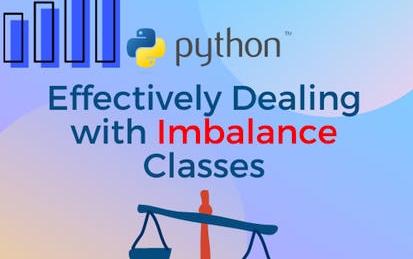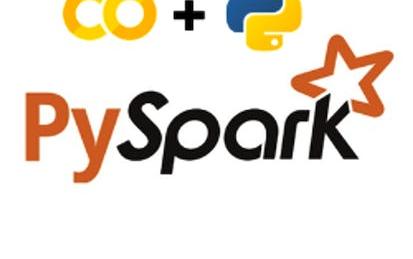

Our Courses

Methods for Solving Problems
In this course, we will explore different types of problems, the boundaries of what makes a problem solvable, and the different algorithms, rules, and heuristics we can implement to solve these problems.
-
Course by

-
 Self Paced
Self Paced
-
 7 hours
7 hours
-
 English
English

Connecting to Devices and Networks
Practice managing devices and networks without installing anything! This course is designed for learners with no technical experience, providing a solid foundation of connecting to devices and networks. Learners will gain hands-on practice on an Ubuntu system that can be easily transferred to other Unix-based operating systems. The modules in this course cover managing devices and partitions, basic networking tools and name resolution, and securely transferring data over networks to create backups. To allow for a truly hands-on, self-paced learning experience, this course is video-free.
-
Course by

-
 Self Paced
Self Paced
-
 7 hours
7 hours
-
 English
English

Diabetes Disease Detection with XG-Boost and Neural Networks
In this project-based course, we will build, train and test a machine learning model to detect diabetes with XG-boost and Artificial Neural Networks. The objective of this project is to predict whether a patient has diabetes or not based on their given features and diagnostic measurements such as number of pregnancies, insulin levels, Body mass index, age and blood pressure.
-
Course by

-
 Self Paced
Self Paced
-
 2 hours
2 hours
-
 English
English

Linux Fundamentals
This course dives deep into the world of Linux, beginning with an introduction to its structure and how to run it on different operating systems. From setting up a Linux container with Docker to understanding the command-line interface, learners quickly get comfortable navigating a Linux environment.
-
Course by

-
 Self Paced
Self Paced
-
 18 hours
18 hours
-
 English
English

Business Model Canvas: A Tool for Entrepreneurs and Innovators (Project-Centered Course)
What you’ll achieve: In this project-centered course*, you will use the Business Model Canvas innovation tool to approach either a personal or corporate challenge or opportunity. You’ll learn to identify and communicate the nine key elements of a business model: Customer Segments, Value Proposition, Channels, Customer Relationships, Key Resources, Key Activities, Key Partners, Revenue Streams, and Cost Structure. Your completed project will be a polished Business Model Canvas that outlines the business case for a new product or service to address your selected challenge or opportunity.
-
Course by

-
 Self Paced
Self Paced
-
 18 hours
18 hours
-
 English
English

Business Analytics with Excel: Elementary to Advanced
A leader in a data driven world requires the knowledge of both data-related (statistical) methods and of appropriate models to use that data. This Business Analytics class focuses on the latter: it introduces students to analytical frameworks used for decision making though Excel modeling. These include Linear and Integer Optimization, Decision Analysis, and Risk modeling. For each methodology students are first exposed to the basic mechanics, and then apply the methodology to real-world business problems using Excel.
-
Course by

-
 Self Paced
Self Paced
-
 23 hours
23 hours
-
 English
English

Introduction to Architecting Smart IoT Devices
Architecting smart IoT (Internet of Things) devices involves designing and developing interconnected devices that can collect and exchange data over the internet to perform various functions and tasks. These devices are equipped with sensors, microcontrollers, communication modules, and software, allowing them to interact with the physical world and communicate with other devices or central systems. What will you learn? Embedded Systems are so ubiquitous that some of us take them for granted: we find them in smartphones, GPS systems, airplanes, and so on.
-
Course by

-
 Self Paced
Self Paced
-
 17 hours
17 hours
-
 English
English

App Dev: Developing a Backend Service - Python
This is a self-paced lab that takes place in the Google Cloud console. In this lab, you will enhance the online Quiz application by developing a backend service to process user feedback and save scores.…
-
Course by

-
 Self Paced
Self Paced
-
 English
English

Thinking About Care
Although all humans require care to develop and thrive, it is rarely the focus of academic studies. This course enriches learner’s understanding of this critical yet underappreciated facet of their lives by addressing such questions as: What is care? Who has traditionally provided it? How valued is care work? Does money take the care out of care work? In addition to advancing learner’s knowledge of the place of care in modern society and controversies surrounding it, Thinking About Care will give learners the opportunity to learn a strategy that surveys existing approaches to care.
-
Course by

-
 Self Paced
Self Paced
-
 8 hours
8 hours
-
 English
English

Effectively Dealing with Imbalance Classes
In this 2 hour guided project you will learn how to deal with imbalance classification problems in a profound manner, applying several resampling strategies and visualizing the effects of resampling on imbalance classification dataset.
-
Course by

-
 Self Paced
Self Paced
-
 3 hours
3 hours
-
 English
English

Datadog: Getting started with the Helm Chart
This is a self-paced lab that takes place in the Google Cloud console. In this lab, you will learn how to use the Datadog Helm Chart. In this lab you will run the Datadog Agent in a Kubernetes cluster as a DaemonSet in order to start collecting your cluster and applications metrics, traces, and logs. You can deploy a Datadog Agent with a Helm chart or directly with a DaemonSet object YAML definition. In this lab you will be explaining and using those options in a real cluster, checking in real time the features they enable.
-
Course by

-
 Self Paced
Self Paced
-
 1 hour
1 hour
-
 English
English

Conduct a 5 Whys Analysis in Miro
By the end of this project, you will be able to conduct a 5 Whys Analysis to engage in a focused discussion to uncover why a problem exists, identify the core issue that can be addressed, and arrive at possible solutions. To do this, you will gain hands-on experience applying the 5 Whys brainstorming strategies while you visualize the results in the Miro online visual collaboration platform for teamwork. Note: This course works best for learners who are based in the North America region. We’re currently working on providing the same experience in other regions.
-
Course by

-
 Self Paced
Self Paced
-
 3 hours
3 hours
-
 English
English

Using Interfaces with C# in Unity
Interfaces are a staple of good programming. They are "blueprints" for functionality and allow your code to be much more versatile, portable and understandable.
-
Course by

-
 Self Paced
Self Paced
-
 2 hours
2 hours
-
 English
English

Child Care as a Business
This course is targeted toward individuals wishing to run a home-based child care center. It covers topics such as the fundamentals of an in-home childcare setting as a business; the importance of financial management of a child care center; the creation of a child care contract; and an exploration of how to set tuition rates. Since a Family Policy Handbook is essential for anyone operating a family day care center, this course includes the development of one of three imperative sections of the handbook.
-
Course by

-
 Self Paced
Self Paced
-
 12 hours
12 hours
-
 English
English

Approximation Algorithms
Many real-world algorithmic problems cannot be solved efficiently using traditional algorithmic tools, for example, because the problems are NP-hard. The goal of the Approximation Algorithms course is to become familiar with important algorithmic concepts and techniques needed to effectively deal with such problems. These techniques apply when we don't require the optimal solution to certain problems, but an approximation that is close to the optimal solution. We will see how to efficiently find such approximations.
-
Course by

-
 Self Paced
Self Paced
-
 15 hours
15 hours
-
 English
English

Connect with Diverse Audiences during a Public Health Crisis
Public health communicators have a duty to communicate health information with integrity, accuracy, and clarity. For messaging to be most effective, public health communicators must help their audiences draw meaningful connections with the information being shared, and connect with them in ways that foster trust and credibility. This course emphasizes how public health communicators can segment their audiences into smaller groups, thereby allowing them to tailor messages to each group's unique needs.
-
Course by

-
 Self Paced
Self Paced
-
 14 hours
14 hours
-
 English
English

Graduate Admission Prediction with Pyspark ML
In this 1 hour long project-based course, you will learn to build a linear regression model using Pyspark ML to predict students' admission at the university. We will use the graduate admission 2 data set from Kaggle. Our goal is to use a Simple Linear Regression Machine Learning Algorithm from the Pyspark Machine learning library to predict the chances of getting admission. We will be carrying out the entire project on the Google Colab environment with the installation of Pyspark. You will need a free Gmail account to complete this project.
-
Course by

-
 Self Paced
Self Paced
-
 2 hours
2 hours
-
 English
English

Digital Transformation with GC - Português Brasileiro
As pessoas estão muito animadas com a tecnologia de nuvem e a transformação digital, mas também ainda têm muitas dúvidas.
Exemplo: O que é a tecnologia de nuvem? O que significa transformação digital? Como a tecnologia de nuvem pode ajudar sua organização? Por onde começar?
-
Course by

-
 Self Paced
Self Paced
-
 English
English

Supply Market Analysis
In this course you will learn some tools to evaluate supply markets from a Strategic level (e.g. Macro) (PESTLE) to Tactical level (e.g. Industry) (Supply Market Segmentation, Five Forces, Supply Chain Mapping) to Operational Level (Supplier) (Informational Sources, SWOT, Financial Analysis) A total of seven "proven" tools will be provided. All of these tools will help you develop the right strategies, reduce risks, and make the "right" supplier decisions. Required reading, supplemental videos and a required case with a Peer Group Assessment will help you increase your learnings.
-
Course by

-
 Self Paced
Self Paced
-
 5 hours
5 hours
-
 English
English

Introduction to Machine Learning on AWS
In this course, we start with some services where the training model and raw inference is handled for you by Amazon. We'll cover services which do the heavy lifting of computer vision, data extraction and analysis, language processing, speech recognition, translation, ML model training and virtual agents. You'll think of your current solutions and see where you can improve these solutions using AI, ML or Deep Learning. All of these solutions can work with your current applications to make some improvements in your user experience or the business needs of your application.
-
Course by

-
 7 hours
7 hours
-
 English
English

Flutter Startup Namer
This is a self-paced lab that takes place in the Google Cloud console. This lab walks you through writing your first Flutter app compatible for Android, iOS, and web.
-
Course by

-
 Self Paced
Self Paced
-
 1 hour
1 hour
-
 English
English

Musicianship: Tensions, Harmonic Function, and Modal Interchange
After a tremendous response from learners on Coursera, Berklee Online has created a Developing Your Musicianship specialization, and this course is the third course in the series. If you have a general understanding of music theory or if you have completed Developing Your Musicianship I and II, this course will continue to help you understand musical concepts, enabling you to create and perform contemporary music. Taught by Berklee College of Music professor George W. Russell, Jr., the course includes four lessons that delve into an intermediate level of harmony and ear training.
-
Course by

-
 Self Paced
Self Paced
-
 11 hours
11 hours
-
 English
English

Digital Signal Processing 4: Applications
Digital Signal Processing is the branch of engineering that, in the space of just a few decades, has enabled unprecedented levels of interpersonal communication and of on-demand entertainment. By reworking the principles of electronics, telecommunication and computer science into a unifying paradigm, DSP is a the heart of the digital revolution that brought us CDs, DVDs, MP3 players, mobile phones and countless other devices. The goal, for students of this course, will be to learn the fundamentals of Digital Signal Processing from the ground up.
-
Course by

-
 Self Paced
Self Paced
-
 14 hours
14 hours
-
 English
English

Create a visual information graphic with Canva
By the end of this project, you will create a visual information graphic using Canva.
-
Course by

-
 Self Paced
Self Paced
-
 3 hours
3 hours
-
 English
English

Introduction to Abnormal Psychology
This course presents an overview of the major domains of abnormal psychology. The course is made up of 5 modules, the first of which provides an introduction to the field through discussions of the concept of psychological abnormality, assessment and classification, and the major models in use for understanding psychological abnormality. The remaining four modules provide overviews of major domains of abnormal psychology, including mood disorders, anxiety disorders, stress and trauma-related disorders, and schizophrenia spectrum disorders.
-
Course by

-
 Self Paced
Self Paced
-
 14 hours
14 hours
-
 English
English



